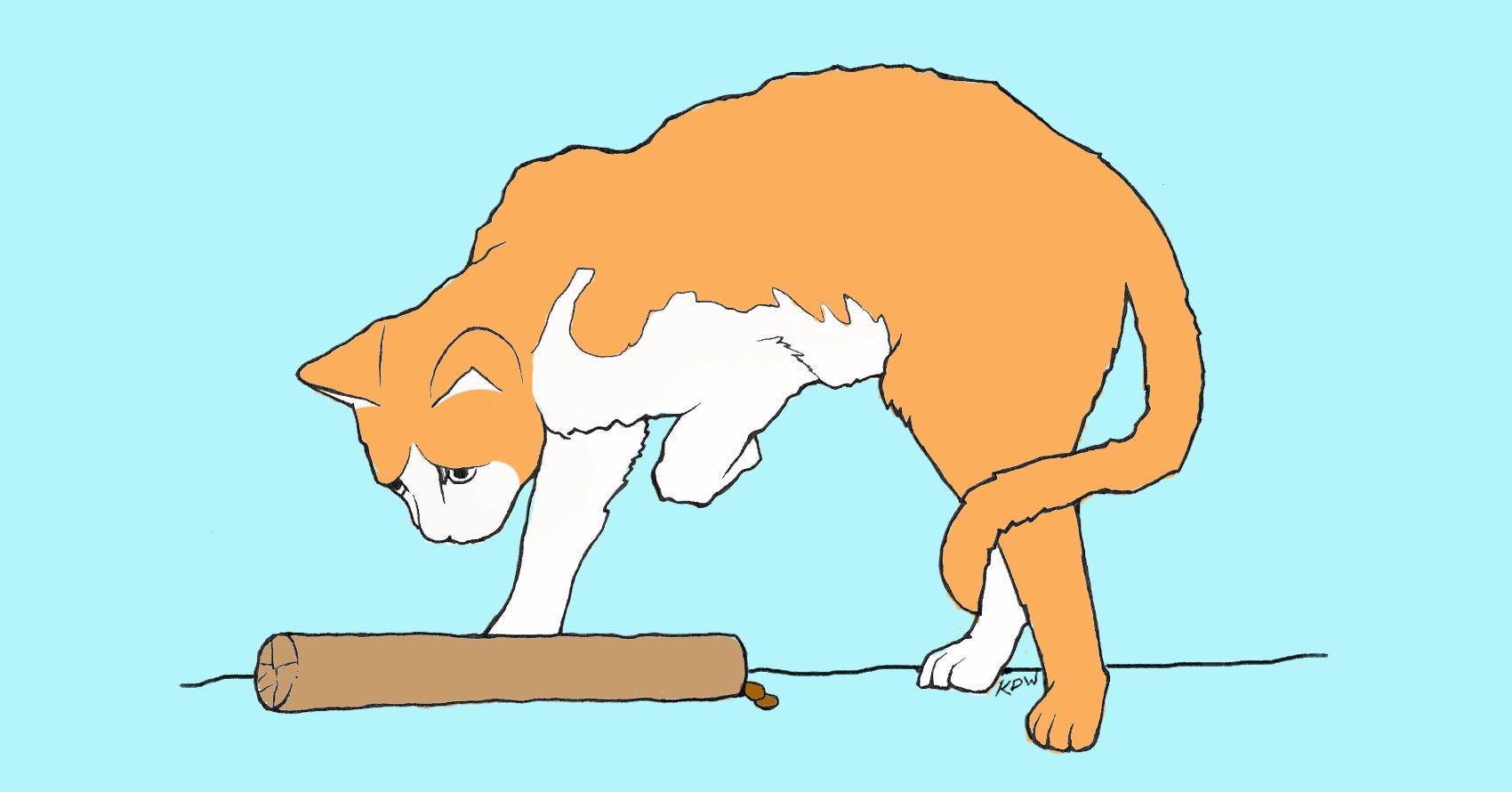DIY: Three Fun Toys for Cats

Since I usually have a litter of foster kittens at home, I'm always looking for ways to amuse them.
Commercial cat toys are great but they can be expensive so I keep an eye open for ways to make cat toys out of supplies I have here at home. The first two I'll share with you here are easy ones I've used for many kittens and cats but the third one I saw online recently and then had to try for myself. I hope you and your cat have fun with all of these.
Water Bottle Toys
Water bottle toys are great fun for both kittens and cats. I use a six to eight ounce size bottle for kittens and 16 ounce and larger for cats. For kittens who are just learning how to play with toys, I'll take a small plastic bottle and let it dry. It needs to be dry so the treats you put in the bottle don't get wet and moldy. I'll remove the cap and, with sharp scissors, cut a couple of holes in the body of the bottle. The holes need to be larger than the kitten's paw but significantly smaller than the kitten's head. Make sure there are no sharp pieces of plastic where you cut the holes. Place a handful of the kitten's kibble in the bottle (or some hard treats). Put the kitten and bottle on the floor and let the kitten investigate it. You might need to move the bottle a little to get the kitten interested. Do not shake the bottle, though, or you'll scare the kitten. It may take a couple of tries before the kitten plays with the bottle toy so don't get discouraged. Kittens are cautious by nature. You can make the same toy for an older kitten or an adult cat with a 16 ounce battle. If your cat is attracted to the bottle toy and gets the kibble or treats out easily, make another toy with a larger bottle. Even a 1 liter bottle will work. Again, take the cap off and cut a couple of appropriate sized holes in the larger bottle. However, if that's too easy for your smart, problem solving cat, leave the cap on and only cut one hole in the side.
Cardboard Tubes
Cardboard tubes found in the center of toilet paper rolls, paper towel rolls, and in wrapping paper can all be great toys. I use the toilet paper tubes for kittens and the paper towel tubes for adult cats. For older cats with confidence and good problem solving skills, a wrapping paper tube works great. Make sure the tube is clean and all adhering lumps of glue and paper are peeled off. Close one end of the tube by folding in two sides of the tube. It won't completely close the end and that's fine; you want some treats to spill out when the cat plays with it. Place some kibble or treats in the tube. For a kitten, initially leave the other end open. Let the kitten figure out how to get a paw into the tube, move the tube, and get the treats out. When this becomes easy for the kitten, then fold one side of the open end closed and eventually, as the kitten's skills get better, close the open end as you did the first end. You can do the the same thing with a paper towel tube for an older kitten or adult cat. The toy is the same except that it's a longer tube that will take more manipulation for your cat to get the treats out. A wrapping paper tube is only for larger cats with better problem solving skills. Since it's longer and larger, the cat will have to manipulate it more to get the treats out of it. To make this toy, close one end by folding in the sides. Cut a couple of holes in the sides of the tube. Make sure they're larger than your cat's paw but smaller than her head. Put some kibble or treats in the tube and then fold in the other end. If your kitten or cat is hesitant to play, drop a couple of flakes of tuna in the tube with the kibble. That will spark some interest.
